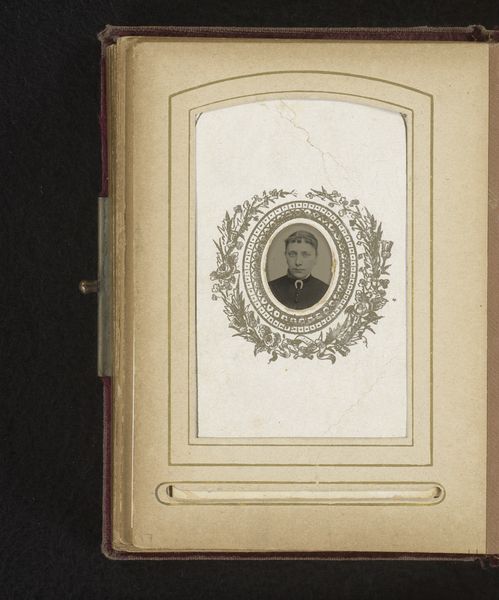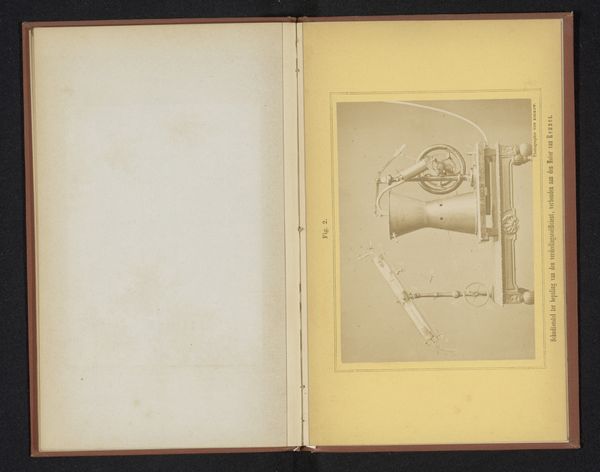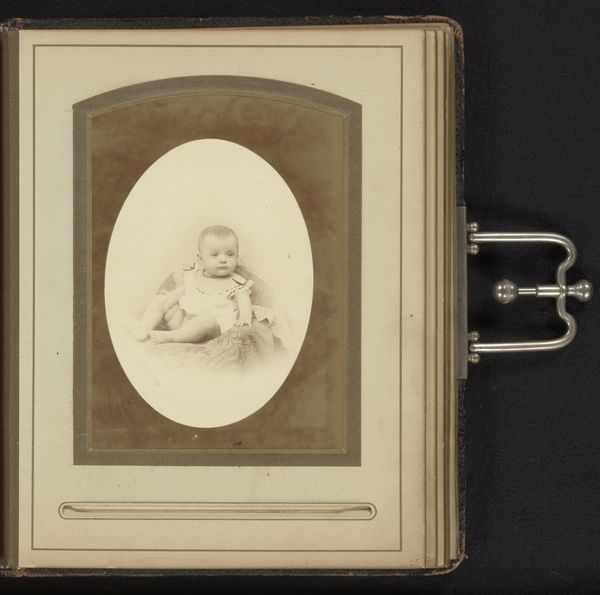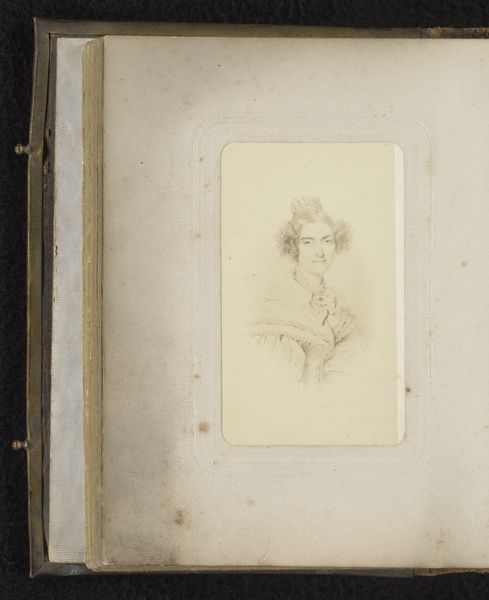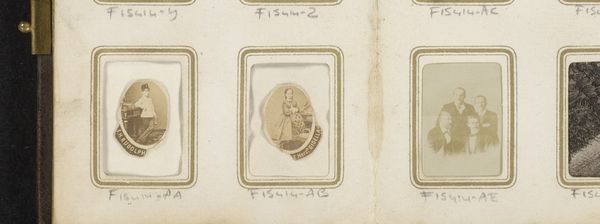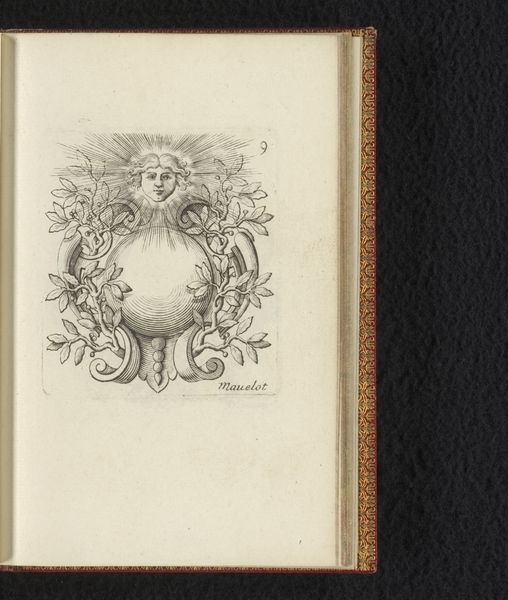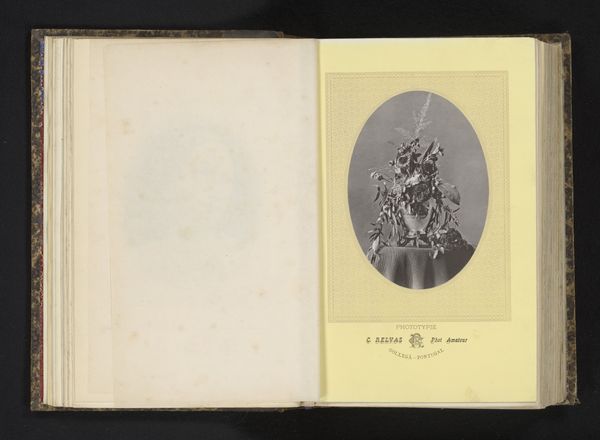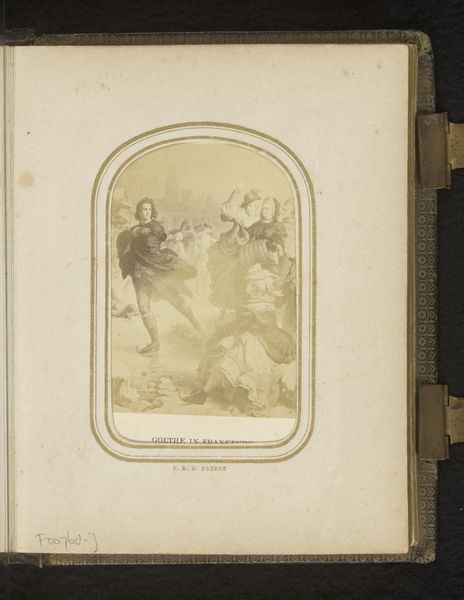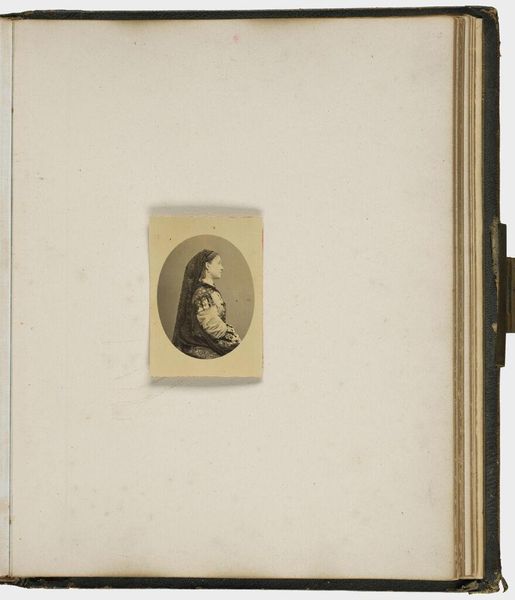
Dimensions: height 28 mm, width 22 mm, height 104 mm, width 64 mm
Copyright: Rijks Museum: Open Domain
Curator: Oh, what a find! This is "Portret van een man," an intriguing drawing attributed to T. Taylor, dating back to before 1882. The paper has aged so beautifully. What's your initial impression? Editor: There’s an unexpected softness. Even within the confines of that formal oval frame, there's something surprisingly intimate, almost melancholic, about the pink tones of the print itself contrasting against the warm yellows of the paper's borders. Curator: Exactly! Taylor’s choice of colored pencil and pen gives the portrait a uniquely intimate quality. And the setting, within what looks like a garden scene being tended to by the lady below the oval portrait? The composition leads your eye in multiple different directions and levels. It really softens the otherwise formal portrait tradition. Editor: Agreed, and look at the way the oval portraits contain what might be called "portraits within portraits", this sets the whole visual theme as almost a stage set: walls, gardens, human figure reaching upwards and lastly, at the very back, a stern male gaze that meets you with cool confidence, surrounded by a rose garland! Do we know anything about the sitter, by chance? Curator: Unfortunately, not much beyond the artist. It appears to have been sketched from a personal sketchbook or found within a sketchbook after his death, giving us little historical data beyond the piece's completion date of 1882. It’s genre-painting meets portraiture, isn’t it? The technique is very Romanticist, capturing an emotion and feeling over objective likeness. Editor: The interplay between the sharp pencil work and delicate shading certainly pulls you in. The textures—from what appears to be light foliage to a possible red brick wall—add layers of depth to the scene. Is this, in some sense, how Taylor perceived reality? Curator: Possibly! It reminds me that even within constraints like formal portraiture, artists can infuse personal interpretation to unveil so much more about a subject than a straight photograph. There’s a delicate push-and-pull happening here. It's as if we're invited to see this man as part of the world, the domestic one being upheld, framed even, by women below, not above, him. What a moment of subversive insight and self-knowledge. Editor: Ultimately, the drawing reminds us that portraiture, even in its most traditional forms, is never simply about likeness. It’s a story, a mood, a carefully constructed version of self and society!
Comments
No comments
Be the first to comment and join the conversation on the ultimate creative platform.
